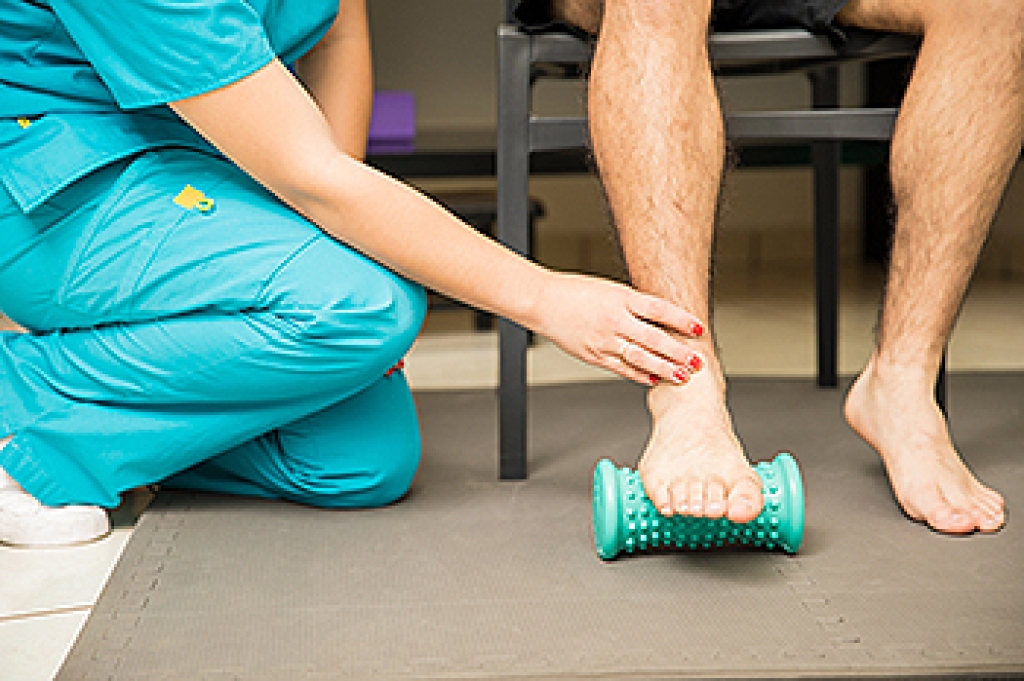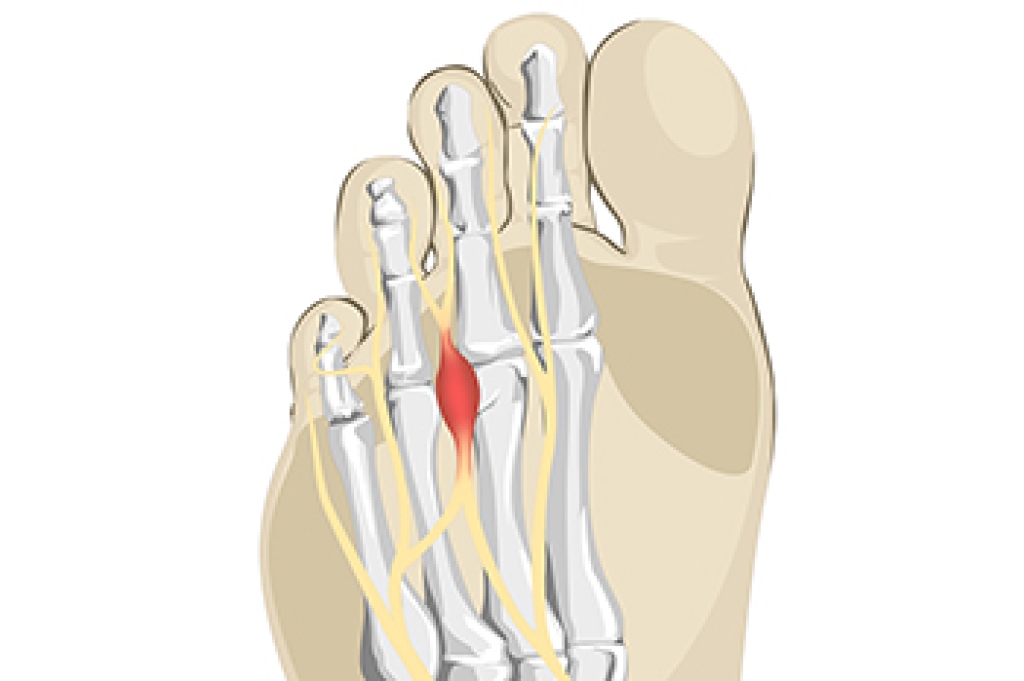Connect With Us
Blog
Prevention of Plantar Fasciitis

Plantar fasciitis is a condition condition involving inflammation in the ligament that extends from the toes to the heels. It is one of the most common causes of heel pain. This affliction can cause sharp pain, especially when arising in the morning, and can interfere with walking or exercise. Plantar fasciitis is caused by activities that place stress on the heel, such as running or jumping, and standing on hard surfaces for a prolonged period of time. Additionally, obesity and aging may contribute significantly to developing plantar fasciitis. Preventive measures that can be taken may include varying exercise routines to work different muscles and including low impact exercise options to reduce stress on the heel. It may be beneficial to wear a night splint on the affected foot to keep the foot and ankle in the optimal position. If you believe that you have plantar fasciitis, it is strongly suggested that you visit a podiatrist who can properly diagnose this condition and obtain treatment that may be more effective for you.
Plantar fasciitis can be very painful and inconvenient. If you are experiencing heel pain or symptoms of plantar fasciitis, contact one of our podiatrists from Associates in Podiatry, PC. Our doctors can provide the care you need to keep you pain-free and on your feet.
What Is Plantar Fasciitis?
Plantar fasciitis is the inflammation of the thick band of tissue that runs along the bottom of your foot, known as the plantar fascia, and causes mild to severe heel pain.
What Causes Plantar Fasciitis?
- Excessive running
- Non-supportive shoes
- Overpronation
- Repeated stretching and tearing of the plantar fascia
How Can It Be Treated?
- Conservative measures – anti-inflammatories, ice packs, stretching exercises, physical therapy, orthotic devices
- Shockwave therapy – sound waves are sent to the affected area to facilitate healing and are usually used for chronic cases of plantar fasciitis
- Surgery – usually only used as a last resort when all else fails. The plantar fascia can be surgically detached from the heel
While very treatable, plantar fasciitis is definitely not something that should be ignored. Especially in severe cases, speaking to your doctor right away is highly recommended to avoid complications and severe heel pain. Your podiatrist can work with you to provide the appropriate treatment options tailored to your condition.
If you have any questions, please feel free to contact our offices located in Pittsburgh-South Hills, and Pittsburgh-Bellevue, PA . We offer the newest diagnostic and treatment technologies for all your foot care needs.
What Is Morton's Neuroma?

Morton’s neuroma is a benign, but painful, condition that affects the ball of the foot. It occurs when the tissue around a nerve leading to a toe thickens from irritation or compression. It usually happens between the third and fourth toes, but can also happen between the second and third toes. If any symptoms are felt, the most prevalent is intermittent pain. There may be a burning sensation in the ball of the foot and a feeling like one is standing on a pebble, marble, or bunched up sock. The toes may feel tingly or numb, and one might have difficulty walking. Even though it feels swollen, there is no visible swelling on the foot. Morton’s neuroma is generally caused by wearing shoes that are too tight or have high heels, foot or gait abnormalities, participating in repetitive sporting activities, or an injury to the foot. If you experience pain in your feet, it is suggested that you see a podiatrist for a proper diagnosis and treatment plan. If not treated in a timely manner, this condition can cause permanent nerve damage.
Morton’s neuroma is a very uncomfortable condition to live with. If you think you have Morton’s neuroma, contact one of our podiatrists of Associates in Podiatry, PC. Our doctors will attend to all of your foot care needs and answer any of your related questions.
Morton’s Neuroma
Morton's neuroma is a painful foot condition that commonly affects the areas between the second and third or third and fourth toe, although other areas of the foot are also susceptible. Morton’s neuroma is caused by an inflamed nerve in the foot that is being squeezed and aggravated by surrounding bones.
What Increases the Chances of Having Morton’s Neuroma?
- Ill-fitting high heels or shoes that add pressure to the toe or foot
- Jogging, running or any sport that involves constant impact to the foot
- Flat feet, bunions, and any other foot deformities
Morton’s neuroma is a very treatable condition. Orthotics and shoe inserts can often be used to alleviate the pain on the forefront of the feet. In more severe cases, corticosteroids can also be prescribed. In order to figure out the best treatment for your neuroma, it’s recommended to seek the care of a podiatrist who can diagnose your condition and provide different treatment options.
If you have any questions, please feel free to contact our offices located in Pittsburgh-South Hills, and Pittsburgh-Bellevue, PA . We offer the newest diagnostic and treatment technologies for all your foot care needs.
Foot Warts in Children

Plantar, or foot warts, are common in children. These warts are lumps that have hardened skin, are typically gray or brown in color, and have irregular surfaces. They are usually located on the heel or sole of the foot – areas that bear most body weight. Plantar warts are not always serious, but they can affect life quality. Foot warts in kids are caused by the human papillomavirus (HPV) and are aesthetically displeasing. Not all children with HPV will get plantar warts. They can occur from walking barefoot on floors containing the virus. Warm, wet areas, like public swimming pools, bathrooms, and changing rooms, are ideal breeding grounds for the virus. Oftentimes, there is a small wound on the foot, which provides an entrance for the foot wart. Plantar warts develop very slowly and may take up to a year to become visible. Symptoms vary depending on the location of the wart. They may hurt when walking and can get infected. If your child has a plantar wart, visit a podiatrist who can offer options for treatment.
Plantar warts can be very uncomfortable. If you need your feet checked, contact one of our podiatrists from Associates in Podiatry, PC. Our doctors will assist you with all of your foot and ankle needs.
About Plantar Warts
Plantar warts are the result of HPV, or human papillomavirus, getting into open wounds on the feet. They are mostly found on the heels or balls of the feet.
While plantar warts are generally harmless, those experiencing excessive pain or those suffering from diabetes or a compromised immune system require immediate medical care. Plantar warts are easily diagnosed, usually through scraping off a bit of rough skin or by getting a biopsy.
Symptoms
- Lesions on the bottom of your feet, usually rough and grainy
- Hard or thick callused spots
- Wart seeds, which are small clotted blood vessels that look like little black spots
- Pain, discomfort, or tenderness of your feet when walking or standing
Treatment
- Freezing
- Electric tool removal
- Laser Treatment
- Topical Creams (prescription only)
- Over-the-counter medications
To help prevent developing plantar warts, avoid walking barefoot over abrasive surfaces that can cause cuts or wounds for HPV to get into. Avoiding direct contact with other warts, as well as not picking or rubbing existing warts, can help prevent the further spread of plantar warts. However, if you think you have developed plantar warts, speak to your podiatrist. He or she can diagnose the warts on your feet and recommend the appropriate treatment options.
If you have any questions, please feel free to contact our offices located in Pittsburgh-South Hills, and Pittsburgh-Bellevue, PA . We offer the newest diagnostic and treatment technologies for all your foot care needs.
Methods That Can Help Elderly People Care For Their Feet

As the aging process occurs, the feet need special care and time to maintain overall foot health as this can positively affect the rest of the body. Many people enjoy soaking their feet in warm water due to its soothing effect. After the feet are thoroughly dried, many patients prefer to apply a good moisturizer on them and may choose to sleep with cotton socks on their feet. Additionally, it is beneficial to keep the toenails properly trimmed as this may help to avoid painful ingrown toenails from developing. The feet will feel good when the shoes that are worn fit correctly, and it is important to have the feet measured when new shoes are purchased. Any sores, blisters, cuts, or wounds that have developed on the feet may need immediate attention to ensure proper foot care is received. The feet will feel better when they are frequently stretched, and this can also help to strengthen the feet to prevent falling. If you would like more information about the type of care that elderly feet may need, please consult with a podiatrist who can address any concerns you may have.
Proper foot care is something many older adults forget to consider. If you have any concerns about your feet and ankles, contact one of our podiatrists from Associates in Podiatry, PC. Our doctors can provide the care you need to keep you pain-free and on your feet.
The Elderly and Their Feet
As we age we start to notice many changes in our body, but the elder population may not notice them right away. Medical conditions may prevent the elderly to take notice of their foot health right away. Poor vision is a lead contributor to not taking action for the elderly.
Common Conditions
- Neuropathy – can reduce feeling in the feet and can hide many life-threatening medical conditions.
- Reduced flexibility – prevents the ability of proper toenail trimming, and foot cleaning. If left untreated, it may lead to further medical issues.
- Foot sores – amongst the older population can be serious before they are discovered. Some of the problematic conditions they may face are:
- Gouging toenails affecting nearby toe
- Shoes that don’t fit properly
- Pressure sores
- Loss of circulation in legs & feet
- Edema & swelling of feet and ankles
Susceptible Infections
Diabetes and poor circulation can cause general loss of sensitivity over the years, turning a simple cut into a serious issue.
If you have any questions, please feel free to contact our offices located in Pittsburgh-South Hills, and Pittsburgh-Bellevue, PA . We offer the newest diagnostic and treatment technologies for all your foot care needs.
Blog Archives
- 2025
- 2024
- 2023
- 2022
- 2021

